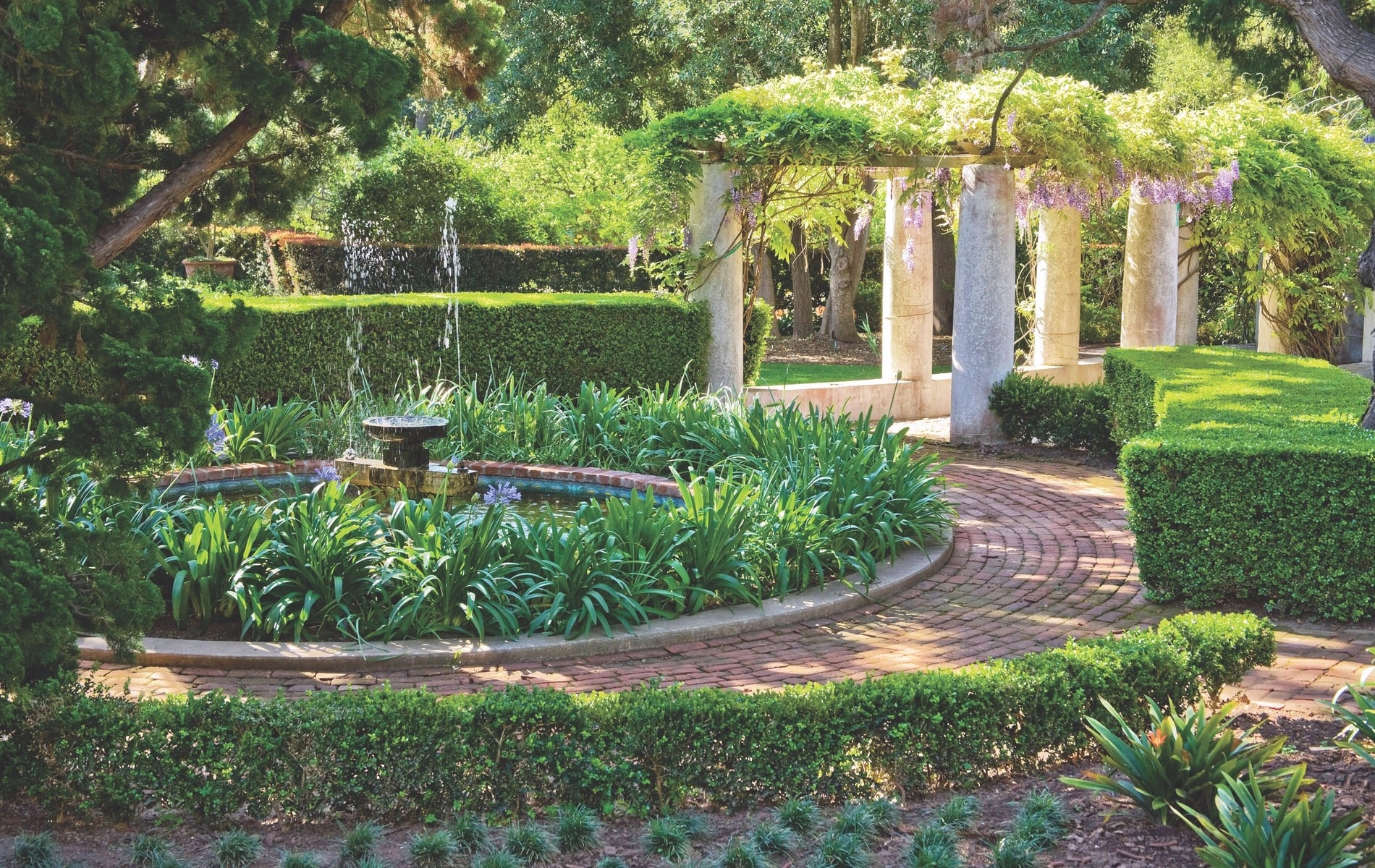
vie-magazine-private-gardens-of-santa-barbara-hero-min
Private Sanctuaries
Paradise in Santa Barbara
Interview by Jordan Staggs | Photography by Holly Lepere
With a family history and background in geology, landscape architect Margie Grace says her original career path never panned out because the “bottom fell out” on the job market in the field. But her rocky start was met with by a nimble redirection, she says. “With four other geologists in the family, I decided I should diversify,” Grace recalls. “Committed to having a career in which I could work outside, I left the program and went to work in landscape maintenance.” Now, with forty years under her belt as a landscape designer—twenty in her firm, Grace Design Associates—the talented designer has curated some of her favorite spaces and places in her new coffee-table book, Private Gardens of Santa Barbara.
Released in March, the compendium of beautiful Southern California gardens is a passion project for Grace, but not her last—she has more books in the works. “Beauty is to be shared; therefore, gardens are for sharing,” she says, explaining the inspiration behind her first book. With most of her work in the Santa Barbara area, popularly known as America’s Riviera, Grace knew it was the ideal focus.
We caught up with Grace to discuss her inspiration for Private Gardens of Santa Barbara, working with photographer Holly Lepere, her best tips for garden design, and more:
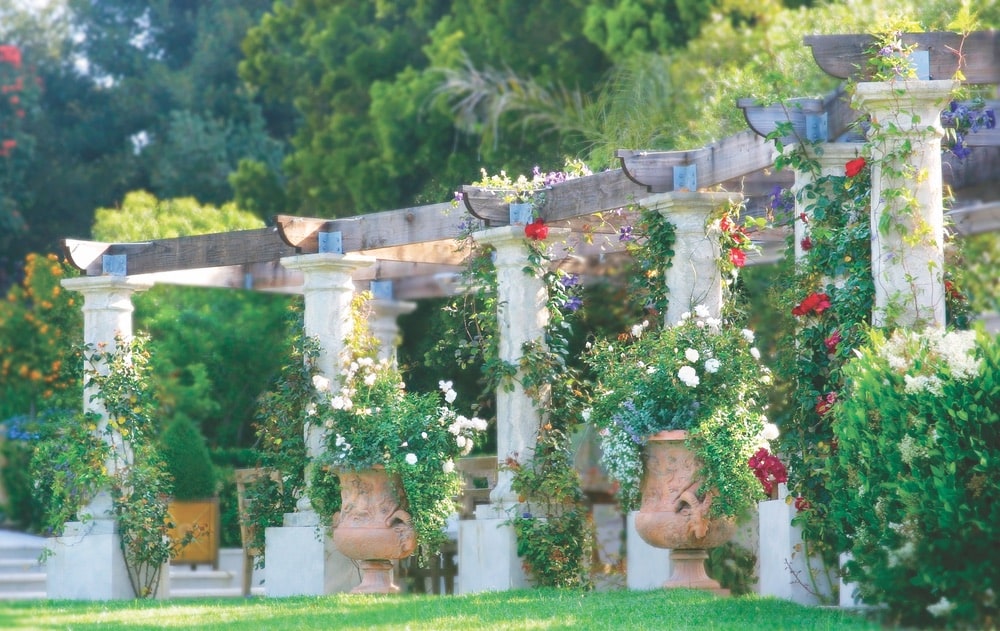
VIE: What inspired you to create a book about gardens?
MG: Most of us are starved for nature. And we’re all moved by beauty. This book allows readers to escape into the featured spaces for a nature and beauty fix. People are also looking for good ideas for their own gardens. They’re looking for inspiration, and this book provides both. They often don’t know how to go about designing their outdoor spaces, so the short background on each garden in the book gives access to the process, but it all starts with a story.
I’m at an age and station in life such that a little introspection and retrospection is appropriate. I got to looking at what I’ve learned through the decades. Why do people respond so strongly to our gardens? What is it about the landscapes we build that resonates with people in a way that doesn’t happen in other outdoor spaces? With a lifelong career in landscape design-build—firmly steeped in landscape maintenance—I’ve come to see the design-build-maintenance continuum as a single, integrated whole. If any one of those components is off, the whole garden is off. This first book is a delightful romp through eighteen gorgeous gardens. It’s meant to provide everything outlined above and to get readers hungry for more—more knowledge, more ideas, more “How did you do that?” (If you’re thinking ahead, yes, there are four more books to come.)
These gardens are private—most people don’t have access to them. Now they do! But I also want to be clear that, despite the title, there are ideas in this book that are adaptable to any region, climate, style, soil, and so on.
The book is driven by the images. There’s such richness in a garden—it’s not just visual. There are sounds and smells and the feel of the sun on your skin.
VIE: How did you go about the process of creating the book?
MG: We’ve had a printed portfolio at Grace Design Associates for years and years—since before everything went digital. Just images, beautifully bound in leather. Everyone loved the portfolio. Clients would look through it and ask, “Where can I get a copy of this book?” With some clients, we’d leave the portfolio behind for them to peruse at their leisure and we’d have trouble getting it back! Finally, it dawned on us that people were hungry for a beautiful book on our gardens.
The book is driven by the images. There’s such richness in a garden—it’s not just visual. There are sounds and smells and the feel of the sun on your skin. We wanted a format that would pull the reader into each garden and give him or her a sense of that richness. The large-format, full-bleed images do just that. To read the book is to fall in love with what’s possible in a garden.
Once the images were winnowed down, I set about penning the short background stories describing how each garden came to be. It’s my hope that these narratives stimulate readers to think about their own outdoor spaces in a new way that gives them access to creating the garden of their dreams—one that really supports their lifestyle, is gentle on the land, is easy to maintain, and brings ongoing joy.
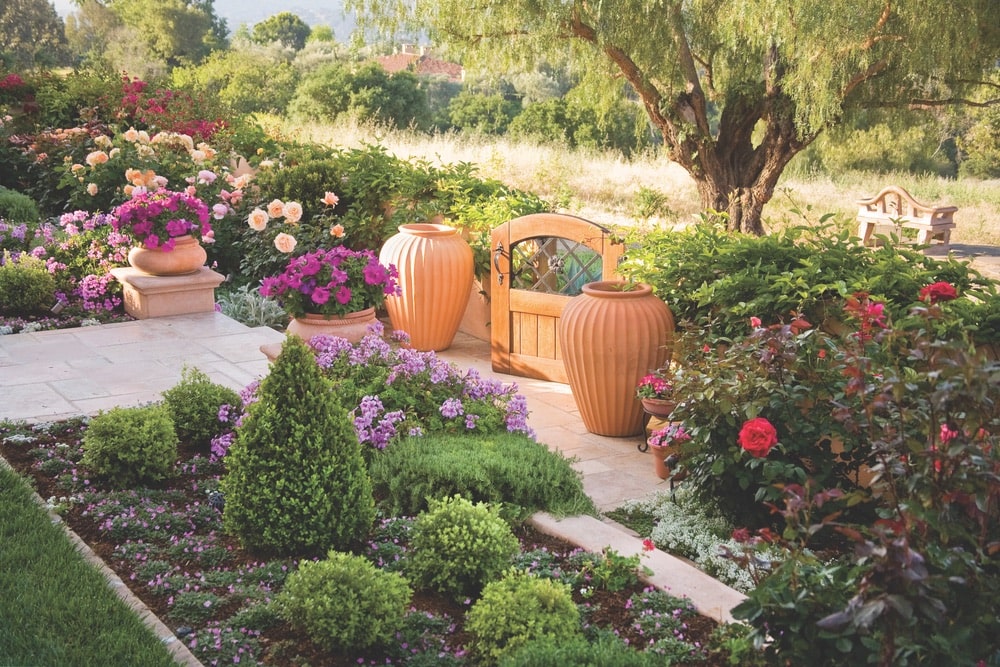
VIE: Did you work closely with photographer Holly Lepere?
MG: Absolutely. Holly has been photographing our work for twenty years. Dawn (Dawn Close, my partner in business and in life) and Holly have worked together shooting the gardens all that time. We’d talk in broad terms about the story we wanted the book to tell, then Holly and Dawn would put their heads together, selecting, laying out, and cropping the images. The whole book was laid out before we ever even approached potential publishers. Then, one day, the phone rang. Katie Killebrew, an editor from our soon-to-be publisher, Gibbs Smith, was on the line. She’d come across our work and wanted to know if we’d ever contemplated doing a book. “Funny,” we said, “we’re working on one right now.” How’s that for kismet? Amazing—just amazing.
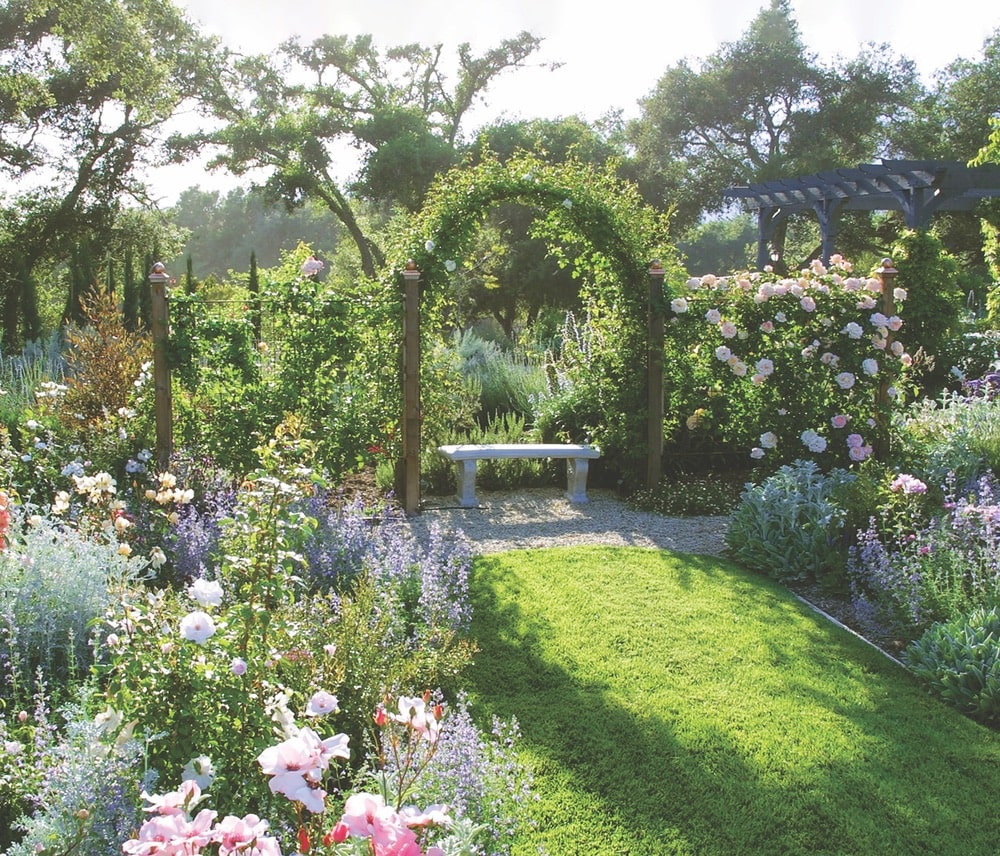
VIE: How did you feel seeing it all come together and holding the book in your hands?
MG: This was a great process. It required critical thinking, identifying exactly how I design and execute a landscape, debating what should be included and not included, etc. I liken it to childbirth—a taxing process, but an awesome result! It was sheer joy opening the box and holding the book, at long last, in my hands!
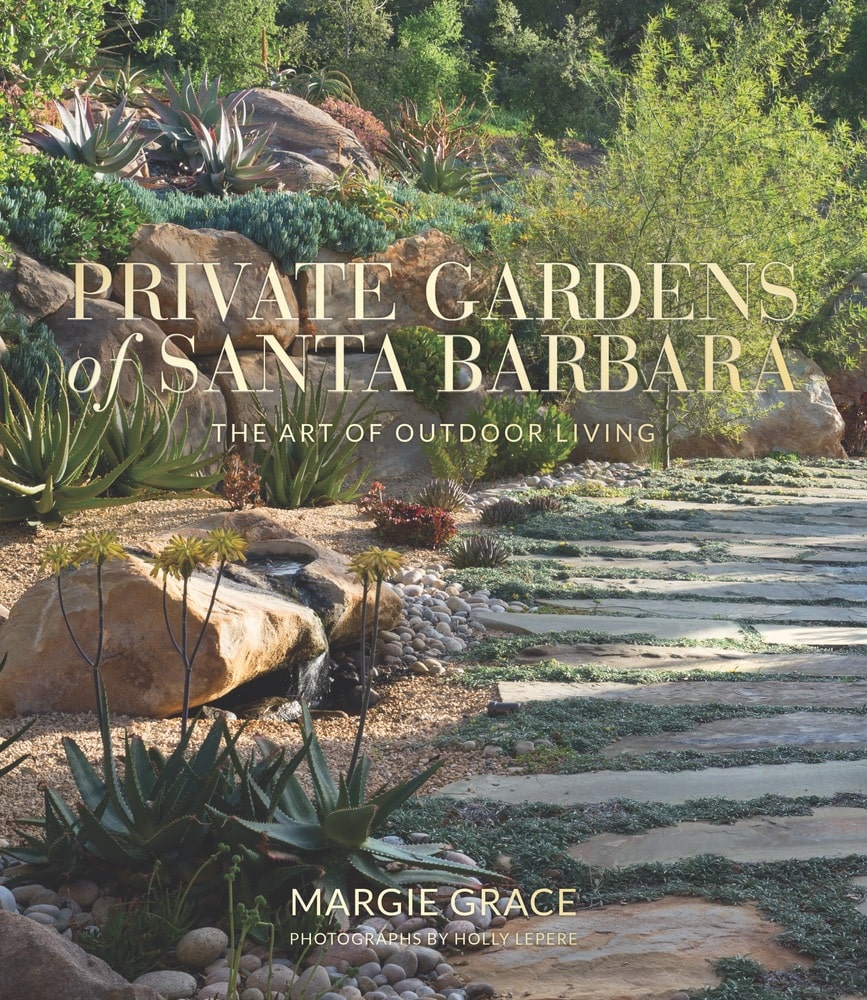
VIE: What are some of your favorite plants to see (and plant) in a garden?
MG: I love grasses and grass-like plants, especially slender veldt grass (Pennisetum spathiolatum), Berkeley sedge (Carex divulsa), Campo Azul moor grass (Sesleria ‘Campo Azul’), Pink Flamingo muhly (Muhlenbergia ‘Pink Flamingo’), and ruby grass (Melinis nerviglumis). I also love sycamore trees, coast live oaks, purple smoke trees, and the beautiful bark of crape myrtles. Matilija poppies (Romneya coulteri) are otherworldly to me. And I love having sculptural succulents in a garden—aloe, agave, echeverias, euphorbias, ponytail palms, and so many more.
To anyone who wants to create a beautiful garden: Dream it. Design it. Do it!
— V —
Despite temporary disruptions due to the COVID-19 outbreak, Margie Grace is still hoping to host many talks and book signings this year, along with spending time with her new grandchild, taking a trip to float down the Rio Grande, and, of course, continuing to work on her upcoming books! Visit GraceDesignAssociates.com for more information and updates. Private Gardens of Santa Barbara is now available on Amazon.

Margie Grace’s Tips for Building a Great Garden
Research: Find/take photos of gardens you love—online, in magazines, around your neighborhood. Don’t focus on plants or other details yet. You’re looking for a feeling; it pulls you in, inspires you; it’s joyful; it’s tranquil—whatever attracts you. Do as little or as much of this as you’re inclined to do. Don’t stress over this. It’s supposed to be fun!
Homework: Think of the following:
Functions: Make a list of how you’d like to use the space—for outdoor cooking, playing with family and pets, entertaining, growing veggies, chill-axing, etc.
Fantasies: Write down your wish list—everything you ever wanted in your dream garden. Put it on the list.
Finances: Figure out your budget.
Build your team:
Find a great designer. Meet them on-site. Bring your homework and photos from your research. See if you have a good rapport and a shared vision of your project and whether you like his/her aesthetic. Then hire them and trust them to guide you to your best garden.
Or design it yourself. Find and copy a space or spaces that fit your needs. Refer to your research and homework frequently as you consider possible designs.
Build your garden: Do it yourself. Have a landscaping party. Use a gardener or a landscape contractor. Or use a design-build firm such as Grace Design Associates.
Share This Story!
KEEP UP WITH THE LATEST STORIES FROM VIE
















































































































































